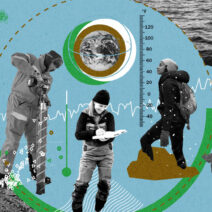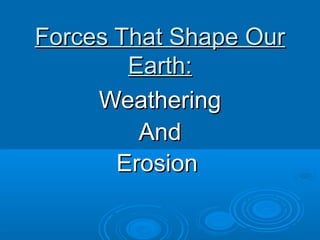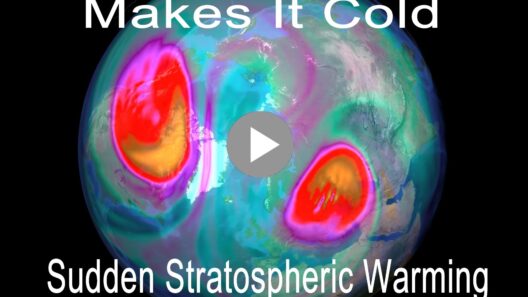Do air pollution and global warming share a direct link? This question incites curiosity, prompting both environmentalists and laypersons to contemplate the intricate nuances of Earth’s ecological balance. As urban areas burgeon and industrialization accelerates, the atmosphere becomes a mosaic of varying pollutants that potentially exacerbate the already critical situation of global warming. Understanding the interplay between these phenomena is crucial for devising effective strategies to combat climate change.
At the outset, it is paramount to delineate the definitions of both air pollution and global warming. Air pollution refers to the introduction of substances into the atmosphere that have harmful or toxic effects on living organisms and the environment. These pollutants can originate from multiple sources such as vehicular emissions, industrial discharges, or natural events like wildfires. On the other hand, global warming is characterized by the long-term increase in Earth’s average surface temperature, primarily driven by the accumulation of greenhouse gases (GHGs) such as carbon dioxide (CO2) and methane (CH4) in the atmosphere. This warming phenomenon is intrinsically tied to human activities, particularly those that elevate GHG concentrations.
At first glance, a direct link between air pollution and global warming may not be immediately evident. However, an examination of their underlying mechanics reveals that they are indeed two sides of the same coin. Numerous air pollutants, particularly carbon emissions, are also greenhouse gases. The combustion of fossil fuels for energy, transportation, and industrial processes emits carbon dioxide, which traps heat within the atmosphere, thus contributing to global warming. Notably, particulate matter—another component of air pollution—may also influence climate by affecting cloud formation and atmospheric radiation. When these particles are dispersed into the troposphere, they can either cool or warm the planet, depending on their composition.
Understanding the chemistry of these pollutants is critical. For instance, nitrogen oxides (NOx) and sulfur dioxide (SO2), both of which are significant air pollutants, can lead to the formation of secondary pollutants such as ozone (O3). When these gases react in the atmosphere under ultraviolet (UV) radiation, they create ground-level ozone, a potent greenhouse gas and harmful air pollutant. Over time, increased levels of ozone can contribute to rising temperatures and exacerbate health issues, creating a cyclical pattern of degradation.
Yet, while global warming and air pollution are linked through shared components, their effects and drivers can diverge significantly. Air pollutants can have immediate and tangible impacts on human health, leading to respiratory diseases, cardiovascular issues, and premature deaths. In stark contrast, global warming’s effects are often more gradual, presenting challenges such as rising sea levels, extreme weather events, and shifting ecosystems. This variance creates a complex landscape wherein priority is not always easily assigned to mitigate both issues concurrently.
However, the quest to improve air quality simultaneously offers an opportunity to combat climate change. This possibility can be framed as a dual challenge: how can policies and innovations aimed at reducing air pollution also enhance efforts to mitigate global warming? This question highlights the pressing need for integrated approaches. For instance, transitioning towards renewable energy sources—such as wind, solar, and hydroelectric power—can dramatically reduce both air pollution and GHG emissions. Consequently, this transition can invigorate economies while facilitating a cleaner atmosphere.
Moreover, reforestation initiatives pose another innovative solution. Forests serve as natural carbon sinks, absorbing CO2 from the atmosphere and providing habitats for diverse species. Increased tree cover can help alleviate both air pollution and global warming, enhancing biodiversity and fostering healthier communities. By prioritizing urban green spaces and sustainable land management practices, cities can ameliorate air quality while simultaneously sequestering carbon.
Urban areas provide fertile ground for examining this linkage further. As populations swell, so too do emissions from transportation and construction. Implementing transport policies that encourage public transport or electric vehicle adoption can significantly reduce emissions. Transforming urban landscapes to prioritize bike lanes and walkable spaces can foster a culture of sustainability, improving air quality while combating climate change.
Conversely, the relationship is not without its challenges. Policy-making often encounters barriers, including political inertia, economic interests, and public perception. For instance, industries heavily reliant on fossil fuels may resist changes that would impact their bottom line, complicating legislative efforts to curb emissions. To overcome these hurdles, a reorientation of societal values towards sustainability and environmental stewardship is necessary. This cultural shift can empower individuals and communities, fostering grassroots movements focused on cleaner air and a stable climate.
In the realm of policy, a synergistic approach can yield comprehensive benefits. Implementing regulations that reduce air pollution—such as stricter emissions standards—can simultaneously necessitate a pivot towards cleaner energy. The interplay of incentives, subsidies for renewable technologies, and community engagement can create a compelling narrative for transitioning towards sustainability.
In conclusion, the interrelationship between air pollution and global warming is a complex web of causative factors and consequential effects. While they share a direct link through common pollutants, their unique impacts pose distinct challenges that necessitate comprehensive and multifaceted solutions. By leveraging innovation, promoting sustainable practices, and fostering a cultural shift towards environmental responsibility, society can address these pressing issues synergistically. As we ponder the question, “Do air pollution and global warming share a direct link?” it becomes evident that addressing one invariably affects the other, illuminating the path towards a more sustainable and healthy future.







